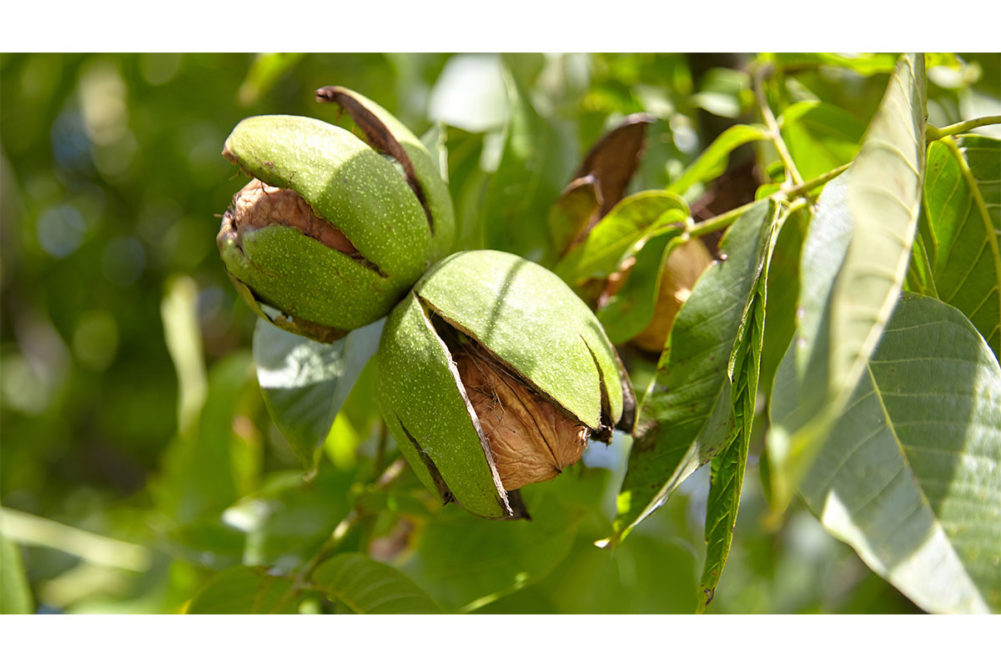FOLSOM, CALIF. — Ahead of an annual US Department of Agriculture estimate for California walnut production, the outlook is far more positive in 2023, according to the California Walnut Board.
In an update published Aug. 9, the CWB credited heavy rains over a long period last winter for restoring subsoil moisture and providing “for healthy root zones, enabling trees to better tolerate late season high temperatures,” the CWB said. Extensive snowpack also helped sustain the trees during the growing season. Rainfall, caused by atmospheric rivers in California, was intense from the first of the year through late March, affecting large areas of Southern California, the Central Coast of California and northern parts of the state.
Production estimates for 2023 will be issued Sept. 1 by the National Agricultural Statistics Service of the USDA.
The improved weather was expected to result in higher production in 2023 after two consecutive years in which walnut production decreased.
The record for California walnut production, according to the USDA, was 790,000 tons in 2020, a crop that capped a remarkable and nearly uninterrupted period of growth for the cultivation of walnut trees. At 790,000 tons, 2020 production was up 57% from 504,000 tons in 2010 and up 142% from 326,000 tons in 2003.
Following the 2020 record, production slipped to 725,000 tons in 2021 and 720,000 tons in 2022, even as bearing acres rose 10,000 each year, to 400,000 in 2022.
Despite the lower production, walnut prices have been depressed, leading a number of growers to remove orchards from production over the past year, the CWB said. Heavy supplies of uncharacteristically dark kernels and poor export demand were blamed for the challenging market conditions.
With the removal of trees, acreage devoted to walnut production decreased for the first time ever, the CWB said, citing an acreage survey that was conducted between October 2022 and June 2023. During the nine-month period, 23,000 acres were removed. In Southern California, tighter water restrictions were cited as a trigger for some of the acreage removal.
“The industry will likely see additional reductions over the balance of 2023,” the CWB said.
With the removal of the acres over the past year, the CWB estimated current productive acreage at 380,000 with another 37,000 younger non-bearing acres.
Adding to optimism about the 2023 crop were mild spring temperatures, which the CWB said resulted in “full, vibrant, vigorous tree canopies, which supported strong pollination, resulting in robust nut sets throughout the orchards.”
“This year, our trees are more capable of handling higher temperatures than the previous years when the trees were under stress due to long-term deficit irrigation,” said Bill Carriere, a fourth-generation grower and handler in Glenn, Calif. “Longtime growers have commented that the trees have not looked this strong and healthy in at least six to seven years.”
The CWB estimated 730,488 tons have been shipped in the current season from an available supply of 880,000 tons.
“We are virtually solid out of available inventory, which bodes well for the industry,” said Martin Mariani, a grower/processor in Winters, Calif.
Additionally, notwithstanding the lower prices, domestic demand has been strong, said Mike Poindexter of Poindexter Nut Co., Selma, Calif. He said US sales are up 28% this year, helping chip away at large inventories.
“Major US retailers significantly increased their promotional efforts, which stimulated consumer sales,” he said. “This is continuing through the fall and will provide nice momentum going into the US holiday season for new crop kernels and inshell sales.”
The CWB also said the export picture was brightening, noting that Chile is expected to be sold out of walnuts by the time the new California crop begins shipping later this year.




